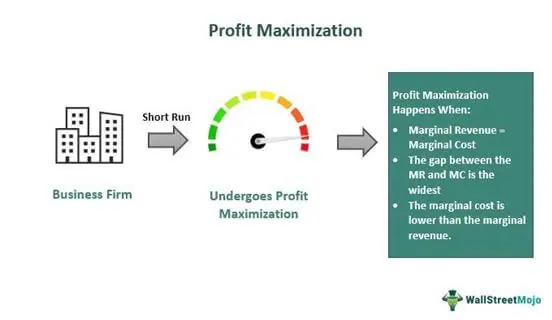
In today’s digital world, selling products on leading online marketplaces has become a common way for businesses to reach a wide audience. But the question is, how can you make sure your business not only survives but thrives in these highly competitive environments? The answer lies in building profitable pricing strategies.
To maximize your profits, you need to use Pricing Optimization, which means setting the right prices for your products. It’s like finding the sweet spot where customers are happy to buy, and you’re happy with your earnings. But it’s not just about setting random prices; it’s about having a clear Marketplace Strategy. This strategy considers your target market, competitors, and unique selling points.
Profit Maximization is the ultimate goal. It’s about making as much money as possible while keeping your customers satisfied. To achieve this, Competitive Analysis is crucial. You need to know what your competitors are doing and how you can do it better.
In this journey, we’ll explore these concepts to help you build effective pricing strategies that lead to success on leading marketplaces. Get ready to boost your profits!
Achieving Profit Maximization Through Strategic Pricing Optimization on Marketplaces
Building Profitable Pricing Strategies on Leading Marketplaces requires careful planning and execution. To achieve Profit Maximization through Strategic Pricing Optimization, sellers must focus on their Marketplace Strategy. This entails understanding the competitive landscape through Competitive Analysis.
By studying the prices set by competitors, sellers can adjust their pricing strategies to stand out while maintaining profitability. Pricing Optimization is the key to this success. It involves setting prices that not only attract customers but also ensure healthy profit margins. This process demands a balance between offering competitive prices and profit maximization.
By consistently evaluating and adjusting pricing strategies, sellers can respond to market fluctuations, adapt to consumer behavior, and ultimately enhance their performance on marketplaces. Successful Pricing Optimization, based on thorough Competitive Analysis, empowers sellers to maximize their profits in the dynamic world of e-commerce.
Marketplace Strategy: Positioning Your Products for Success in Competitive Markets

Marketplace Strategy: Positioning 0etplaces. To excel in this competitive landscape, sellers must develop a comprehensive Marketplace Strategy. This strategy encompasses aspects like Pricing Optimization and Competitive Analysis.
Pricing Optimization is about setting the right prices for your products, ensuring they attract customers while still maximizing profits. Competitive Analysis helps you understand your rivals’ pricing tactics and adjust your own accordingly. But it’s not just about pricing – it’s about how you present your products in the marketplace.
A well-planned Marketplace Strategy involves product positioning, emphasizing your unique value, and leveraging marketing tools provided by the marketplace. By doing so, you can stand out and capture the attention of potential buyers, contributing to Profit Maximization through strategic pricing that aligns with your marketplace goals
Deep Dive into Competitive Analysis and Pricing
A Deep Dive into Competitive Analysis and Pricing is an essential component when it comes to Building Profitable Pricing Strategies on Leading Marketplaces. Competitive Analysis involves a thorough examination of your rivals’ pricing strategies, product offerings, and market positioning.
This analysis provides valuable insights for your own Pricing Optimization efforts. By understanding what your competitors are doing, you can make informed decisions on how to price your products competitively while ensuring Profit Maximization.
To excel in this aspect, sellers should focus on not just the numbers but also the context. Look beyond prices to understand the value your competitors offer, and consider your Marketplace Strategy in conjunction with Competitive Analysis. By conducting this deep dive, you’ll be well-equipped to fine-tune your pricing strategies and enhance your performance on leading marketplaces, ultimately driving profitability.
This comprehensive approach blends Pricing Optimization, Marketplace Strategy, and Competitive Analysis for a successful marketplace presence.
Implementing Pricing Strategies Across Multiple Brands for Marketplace Success
Amazon: In the world of online marketplaces, successful brands like Amazon, Swiggy, and Plixlife have distinct pricing strategies. Amazon, for instance, prioritizes keeping prices low and dynamic, adjusting them frequently to foster customer loyalty and encourage merchants to compete for the Buy Box. This focus on affordability and convenience ensures a wide selection for customers, reinforcing their loyalty and driving profits.
Swiggy: Swiggy, on the other hand, employs a multifaceted approach. They start with lower prices to gain market share, gradually increasing them to reach break-even without significantly affecting their order volume. Demand-based pricing, or surge pricing, is introduced during peak times, allowing flexible adjustments to manage demand. Additionally, value-based pricing, exemplified by “Swiggy Super,” offers customers special benefits for a small fee, such as exemption from delivery charges and free meals.
Plixlife: Plixlife stands out with its commitment to affordability and customer incentives. They offer cashback on every purchase and provide coupon codes for extra discounts. Their pricing model ensures that customers receive value for their money while enjoying additional savings through cashback and discounts.
Strategies for Long-term Profit Maximization in Leading Online Marketplaces
- Pricing Optimization: A Lesson from Nykaa
Nykaa, a leading beauty and cosmetics marketplace, has mastered the art of pricing optimization. Recognizing the diverse budget constraints of its customer base, Nykaa strategically offers a wide range of products at various price points.
From affordable drugstore brands to high-end luxury cosmetics, Nykaa caters to customers across the economic spectrum. This strategic pricing not only attracts a broad customer base but also ensures that Nykaa maximizes its revenue by tapping into different market segments. By understanding the value perception of its diverse customers, Nykaa optimizes its pricing to enhance customer satisfaction and drive profitability.
- Marketplace Strategy: Myntra’s Market Dominance
Myntra, a prominent fashion e-commerce platform, exemplifies a robust marketplace strategy. Myntra doesn’t just sell its products; it serves as a platform for various fashion brands to showcase and sell their merchandise. By embracing a marketplace model, Myntra expands its product offerings without the burden of maintaining vast inventories.
This approach enhances customer choice and attracts a larger audience. Myntra’s marketplace strategy not only boosts its own sales but also generates revenue through commissions from partner brands. The result is a win-win scenario where Myntra maximizes profits by leveraging its platform to create a thriving ecosystem of buyers and sellers.
- Competitive Analysis: Amazon’s Mastery in Market Intelligence
Amazon, a global e-commerce giant, is renowned for its prowess in competitive analysis. The company continuously monitors the prices, product offerings, and strategies of its competitors. Through advanced data analytics, Amazon adjusts its pricing, promotional tactics, and inventory to maintain a competitive edge.
By staying ahead of market trends and understanding consumer preferences, Amazon ensures that it not only captures a significant market share but also maximizes profits. The constant scrutiny of competitors allows Amazon to adapt swiftly to changing market dynamics, securing its position as a profit-maximizing industry leader.
Profit Maximization Strategy: Integration of Pricing Optimization, Marketplace Strategy, and Competitive Analysis

The synthesis of pricing optimization, marketplace strategy, and competitive analysis forms a powerful profit maximization strategy. Realizing that customers have varying preferences and financial capacities, companies like Nykaa optimize their pricing to cater to a diverse audience.
By embracing a marketplace model, as demonstrated by Myntra, businesses can expand their product offerings without the burden of extensive inventories, thereby increasing revenue streams. Simultaneously, employing competitive analysis, similar to Amazon’s approach, allows companies to stay ahead of market trends, adjust pricing dynamically, and maintain a stronghold in the industry.
In essence, a holistic profit maximization strategy involves understanding the market, tailoring pricing to customer segments, leveraging a marketplace model for diverse offerings, and staying vigilant through competitive analysis. By integrating these approaches, businesses can not only boost profitability but also create sustainable, adaptive models in today’s dynamic and competitive market landscape.
Conclusion.
In conclusion, crafting profitable pricing strategies on leading online marketplaces is a vital key to success for businesses in the digital age. We’ve learned that Pricing Optimization is not just about picking numbers out of a hat; it’s a calculated approach to find that ideal balance where both you and your customers win.
A well-thought-out Marketplace Strategy is your guiding light, ensuring you understand your target audience, stand out from the competition, and position your products for success. The ultimate aim, of course, is Profit Maximization, where you’re not just making sales but making money.
To achieve this, Competitive Analysis is your secret weapon. By monitoring and outperforming your competitors, you’re on the path to sustainable growth. With the right strategy, you can create a profitable feedback loop that continuously adapts to the changing marketplace landscape.
So, remember, success in leading marketplaces isn’t about luck; it’s about strategy, optimization, and analysis. With these tools, you’re well-equipped to thrive and prosper in the dynamic world of online commerce. Keep innovating, stay competitive, and watch your profits soar.





